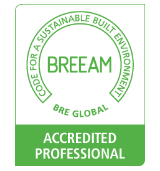Legionnaires’ disease is a serious and potentially fatal form of pneumonia that can affect anyone, particularly those with weakened immune systems. Caused by Legionella bacteria, which thrive in certain water systems, the disease is preventable with the right knowledge and proactive measures.
1. What is Legionnaires’ Disease?
Legionnaires’ disease is a severe lung infection caused by inhaling water droplets contaminated with Legionella bacteria. These bacteria are naturally found in freshwater environments like lakes and rivers but become a health concern when they grow in man-made water systems, such as cooling towers, hot tubs, and large plumbing systems.
The disease can be life-threatening, with symptoms ranging from high fever, cough, and muscle aches to severe pneumonia. It is particularly dangerous for older adults, smokers and individuals with chronic illnesses or weakened immune systems. According to Legionella Control, Legionnaires’ disease has a “high mortality rate of around 10-15%”. Outbreaks typically occur in buildings with complex water systems where Legionella can multiply and spread, such as hospitals, hotels and large office buildings.
2. High-Risk Environments
Certain environments are particularly susceptible to the growth of Legionella bacteria, increasing the risk of Legionnaires’ disease. Understanding these high-risk areas and how to manage them is crucial for facility managers, particularly in settings where large water systems are prevalent, these environments include:
- Hospitals and Healthcare Facilities: these buildings often have extensive hot and cold water systems that provide for numerous water outlets. Patients in these settings often have weakened immune systems, making them more vulnerable to the symptoms of Legionnaires’ disease if exposed. Regular legionella risk assessments and diligent maintenance of shower heads, faucets, and air conditioning units are essential to minimise risks.
- Hotels, Resorts and Spas: Frequently use hot tubs, spa pools, and cooling towers in their operations, all of which can be breeding grounds for bacterial growth if not properly maintained. Droplets of water from these sources can easily be inhaled, leading to the spread of Legionella. Ensuring that water temperatures are appropriately controlled and systems are regularly cleaned and disinfected is key to reducing the risks of an outbreak.
- Office Buildings: Large office buildings typically have extensive air conditioning systems and hot and cold water systems that require constant monitoring. Stagnant water in unused water outlets or inconsistent water temperature control can create the ideal conditions for the growth of Legionella. Regular legionella risk assessments and maintenance are essential to ensure that all systems are functioning safely.
- Industrial Sites: Factories and other industrial facilities often use large-scale water supply systems for cooling machinery and other processes. These cooling towers and hot and cold water systems are particularly prone to bacterial growth if water quality is not carefully monitored. Contaminated droplets of water can be dispersed through the air, putting workers at risk of exposure.
In these settings, the risk of an outbreak is significantly higher due to the complexity of the water systems and the difficulty in maintaining consistent water quality across all areas.

3. Importance of Regular Water System Maintenance
Regular maintenance of hot and cold water systems is critical to preventing the growth of Legionella bacteria and ensuring compliance with regulations set by the Health and Safety Executive. This is especially important in high-risk environments where the consequences of an outbreak can be severe.
- Preventing Bacterial Growth: Legionella bacteria thrive in water temperatures between 20°C and 45°C (68°F to 113°F). Without regular maintenance, water outlets like shower heads, taps, and air conditioning systems can harbour stagnant water at these temperatures, creating ideal conditions for bacterial growth. Routine inspections, cleaning, and disinfection are crucial to maintaining a safe environment.
- Temperature Control: Effective control of water temperature is one of the most critical factors in preventing the growth of Legionella. Maintaining hot water above 60°C (140°F) and ensuring cold water is kept below 20°C (68°F) are essential measures. Regular checks of water temperature at various points in the system help to identify potential problem areas where the bacteria could thrive.
- Disinfection and Cleaning: Disinfection of hot and cold water systems and cooling towers is vital to keep Legionella levels under control. This includes the regular cleaning of shower heads, faucets, and hot tubs to remove any build-up of biofilms where bacteria might hide. In some cases, chemical treatments or thermal disinfection may be necessary to fully eradicate the bacteria.
- Monitoring and Testing: Regular monitoring and water testing are essential components of any maintenance plan. By conducting periodic legionella risk assessments, you can detect the presence of Legionella before it becomes a significant health threat. Testing provides valuable data that helps in adjusting maintenance practices to better prevent bacterial growth.
- Documentation and Compliance: Staying compliant with the Health and Safety Executive regulations requires thorough documentation of all maintenance activities. Detailed records of legionella risk assessments, disinfection procedures, and water temperature checks are necessary to demonstrate that you are taking all required steps to reduce the risks of Legionnaires’ disease.
Regular cleaning, disinfection, and system checks are essential to maintain water quality and reduce the risk of Legionella contamination.
4. Early Detection Through Water Testing
Early detection of Legionella is crucial in preventing an outbreak. Regular water testing allows for the identification of Legionella bacteria before they reach harmful levels. Testing is especially important in high-risk environments, where the consequences of an outbreak can be severe.
Testing typically involves sampling water from various points within a system and analysing it for the presence of Legionella. If detected early, steps can be taken to disinfect the system and prevent the bacteria from spreading further. Regular testing also provides a record of water quality, helping to ensure ongoing compliance with health and safety regulations.
5. Compliance with Safety Regulations
Legionnaires’ disease is not just a health risk; it is also a regulatory concern. In the UK, the Health and Safety Executive (HSE) provides guidelines for managing and controlling the risks associated with Legionella in water systems. These regulations are designed to protect public health and reduce the likelihood of outbreaks.
Compliance involves:
- Regular Risk Assessments: Identifying and evaluating potential risks in your water systems.
- Water Treatment Plans: Implementing measures to control the growth of Legionella, such as temperature control, disinfection, and system maintenance.
- Documentation and Reporting: Keeping detailed records of maintenance activities, risk assessments, and water testing results to demonstrate compliance with legal requirements.
Failure to comply with these regulations can result in legal action, fines, and a damage of reputation, making it essential for businesses to prioritise water hygiene management.

How Genex Helps: Comprehensive Solutions for Preventing Legionnaires’ Disease
At Genex, we understand the complexities of managing water systems and the critical importance of preventing Legionnaires’ disease. Our comprehensive suite of services is designed to help you maintain safe and compliant water systems, tailored to the specific needs of your facility. Here’s how we can help:
- Risk Assessments: We conduct thorough assessments of your water systems to identify potential risks for Legionella growth. Our experts analyse all aspects of your systems, from water flow and temperature to the presence of biofilms, and provide actionable recommendations to mitigate these risks.
- Water Testing: Genex offers regular water testing services to detect the presence of Legionella bacteria. Using state-of-the-art laboratory techniques, we ensure that any contamination is identified early, allowing for prompt and effective remediation.
- Maintenance and Disinfection: Our team provides routine cleaning, disinfection, and maintenance services to keep your water systems free from contamination. We use the latest technologies and best practices to ensure that your systems remain safe and efficient.
- Temperature Control: We help you manage and monitor water temperatures to prevent Legionella from thriving. By keeping water outside the optimal temperature range for bacterial growth, we significantly reduce the risk of an outbreak.
- Compliance Support: Genex ensures that your facility is fully compliant with all relevant health and safety regulations. We provide comprehensive documentation and reporting, giving you peace of mind that your water hygiene management meets or exceeds legal requirements.
With Genex, you’re not just managing risk—you’re preventing it. Our proactive approach and commitment to excellence ensure that your water systems are always in top condition, protecting the health and safety of everyone in your facility. For more information on how Genex can help protect your facility from Legionnaires’ disease, contact us today.














